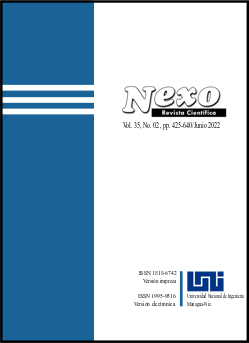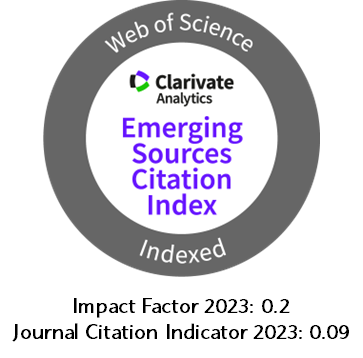Mechanical characterization of reconstituted leather through the tension and yield test
DOI:
https://doi.org/10.5377/nexo.v35i02.14621Keywords:
Reconstituted leather, leather shavings, thermoplastic matrix, experimental design, tensil and creep testAbstract
The combination of different qualities of leather waste with different polymers and the resulting mechanical properties are potentially important for obtaining new materials. In this study, experiments combining leather chip residue, vinnapas ®400 resin and distilled water produced a new composite material with interesting mechanical properties. In the elaboration, the pH of the leather chip, chip size, resin temperature, softening temperature, pressure and the pressing time exerted on the reconstituted leather plate were controlled. Using fractional factorial design, the influence of the selected independent variables was determined: chip size, chip/resin ratio, percentage of water, resin temperature, pressure and pressing time on the mechanical properties of the composite material. The experimental results showed that there was a main effect of the Chip/Resin ratio variable at its minimum value on the maximum traction effort, reaching a value of 2,657 MPa. Additionally, in the mechanical creep test, it was found that the composite material called reconstituted leather shows a viscoelastic behavior, which resembles the behavior of tanned leather.
Downloads
636
Downloads
Published
How to Cite
Issue
Section
License
Copyright (c) 2022 Universidad Nacional de Ingeniería

This work is licensed under a Creative Commons Attribution 4.0 International License.
The authors who publish in Nexo Scientific Journal agree to the following terms:
- Authors retain the copyright and grant the journal the right of the first publication under the license Creative Commons Attribution License, which allows others to share the work with a recognition of the authorship of the work and the initial publication in Nexo Scientific Journal.
- Authors may separately establish additional agreements for the non-exclusive distribution of the version of the work published in the journal (for example, in an institutional repository or a book), with the recognition of the initial publication in Nexo Scientific Journal.
- Authors are allowed and encouraged to disseminate their works electronically (for example, in institutional repositories or in their own website) before and during the submission process, as it can lead to productive exchanges, as well as earlier and greater citation of published works.











